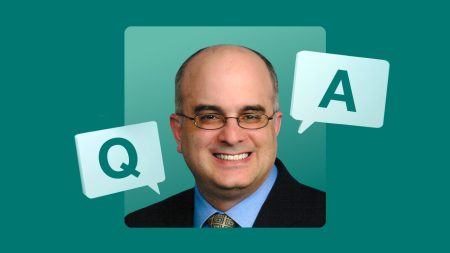Key Takeaways
- Despite market volatility and economic uncertainty, top high-yielding savings accounts still offer competitive rates.
- A group of major banks lowered APYs on their high-yield savings accounts by 10-15 basis points last week.
- The highest rate on a savings account today is 4.45 percent, offered by BrioDirect. A minimum opening deposit of $5,000 is required.
As market turbulence and economic uncertainties continued to unfold last week, high-yield savings accounts among numerous banks and credit unions managed to maintain their competitive rates. That’s saying a lot, considering that the Dow Jones Industrial average dropped 3.5 percent last week and a few major banks lowered – albeit slightly – the annual percentage yields (APYs) on their high-yield savings accounts.
But first, some good news: APYs among the top high-yield savings accounts remain competitively high. With reports in mid-April that the Consumer Price Index was up 2.4 percent over the previous year in March, it became official that the top-yielding savings account that Bankrate tracks has outpaced inflation for two straight years.
Currently, the highest rate on a savings account is 4.45 percent APY, among accounts monitored by Bankrate’s editorial staff. While top APYs have retreated from above 5 percent in late 2024 to about mid-4 percent, savers today are still in a great position to save their money in a high-yield savings account because inflation has decreased considerably more than yields on savings accounts in the past two years.
What are today’s best savings account rates?
BrioDirect‘s High-Yield Savings account earns a 4.45 percent APY, which is currently the top yield among the dozens of accounts Bankrate monitors and reviews. It requires a minimum opening deposit of $5,000. Those looking for a high rate with a lower minimum deposit can earn 4.40 percent APY from Bread Savings and Openbank, which require $100 and $500, respectively.
|
Bank |
APY |
Minimum opening deposit |
|
BrioDirect |
|
$5,000 |
|
Bread Savings |
|
$100 |
|
Openbank |
|
$500 |
|
Rising Bank |
|
$1,000 |
|
EverBank |
|
$0 |
|
TAB Bank |
|
$0 |
|
Forbright Bank |
|
$0 |
|
CIBC Bank USA |
|
$1,000 |
|
Bask Bank |
|
$0 |
|
CIT Bank |
|
$100 |
Note: Annual percentage yields (APYs) shown are as of April 21, 2025. APYs for some products may vary by region.
How does the Federal Reserve impact high-yield savings accounts?
When the Federal Reserve raises its benchmark federal funds rate, competitive banks often respond by increasing their APY offerings. Likewise, when the Fed cuts its key rate, banks tend to lower their APYs.
After hiking the federal funds rate 11 times in 2022 and 2023 to combat inflation, policymakers went on to lower the rate in late 2024. Rates on many high-yield savings accounts followed suit.
The inflation rate has come down to a four-year low of 2.4 percent. So far, officials have held the federal funds rate steady in 2025, and this holding pattern could spur stability for some savings accounts as well as high-yielding certificates of deposit (CDs).
Going forward, however, some economists say inflation could rise as a result of President Donald Trump’s planned tariff increases.
A few banks lowered their savings APYs. Here’s what that means for you
Last week saw three notable banks lower the APYs on their high-yield savings accounts, although not by much. BMO Alto and Barclays are two banks that did so on April 15. BMO Alto’s savings account decreased 10 basis points, or 0.1 percentage-point, to 3.60 percent APY, where it yields today. Barclays’ savings account also decreased 10 basis points to 3.80 percent APY.
Online-only Bask Bank lowered its savings yield by 15 basis points to 4.20 percent APY on April 18. Generally, a 10-15 basis-point drop in yield isn’t a reason to switch banks.
This is a reminder that you should always check your banking app and/or bank statement often to make sure you’re still earning a competitive yield on your savings.
Bottom line
Top high-yield savings accounts are earning above 4 percent APY, well above the current inflation rate of 2.4 percent, and most can be found at online-only banks. In addition to finding a high rate, be sure to go with a bank that’s insured by the Federal Deposit Insurance Corp. (FDIC) or a credit union that’s a member of the National Credit Union Administration (NCUA) and insured through the National Credit Union Share Insurance Fund (NCUSIF). This guarantees your deposits that are within insurance limits are backed by the full faith and credit of the U.S. government and protected by up to $250,000 per depositor, per insured institution and per ownership category should the insured financial institution fails.
Read the full article here










